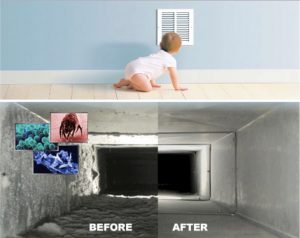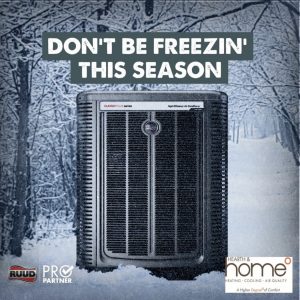Carbon Monoxide Monitors – What You Need To Know!
Carbon Monoxide is a harmful odorless gas that can cause hazards or death when inhaled in confined spaces. Sources of carbon monoxide include vehicles, generators, gas furnaces, gas range, chimneys, stoves, gas water heaters, space heaters, and gas line leaks. Carbon monoxide can be difficult to detect because of its colorless and odorless form. This is one of the reasons why it’s deadly. Most people get carbon monoxide monitors to help them detect toxic gas.
Carbon monoxide monitors help to detect carbon monoxide and alerts you. They are potential lifesavers because carbon monoxide can be difficult to detect without them. The efficiency of carbon monoxide monitors has made some communities pass local laws for them to be installed in every home.
The Dangers of Carbon Monoxide
According to the Centers for Disease Control and Prevention (CDC), not less than 430 people die every year from carbon monoxide poisoning. In addition, about 50,000 people are treated in emergency rooms each year due to exposure to carbon monoxide.
Carbon monoxide causes serious fatalities to the health of anyone who inhales it. It attacks the red blood cells, goes to the lungs, and deprives the body of oxygen. There are symptoms that show when you inhale carbon monoxide. These symptoms include headache, vomiting, shortness of breath, nausea, chest tightness, dizziness, and fatigue. Without treatment, these early symptoms can turn into deadly symptoms.
How to Prevent Carbon Monoxide Poisoning Around You
Although Carbon monoxide may be hard to detect, it can be prevented. Here are effective ways to avoid carbon monoxide poisoning.
Avoid Using a Gas Range: Do not use a gas range as your heater. Carbon monoxides are byproducts of gas stoves. Hence your home would be filled with toxic gas if you use gas stoves.
Warm Your Car Outside the Garage: Carbon monoxides are byproducts of car exhausts. You can prevent carbon monoxide by warming up your car outside the garage. This prevents carbon monoxide from building up within the garage and causing health hazards.
Run Gas-Powered Machines in Ventilated Areas: Carbon monoxides build up quickly in enclosed and confined areas. They are very dangerous in enclosed places. Adequate ventilation help to limit the effects of carbon monoxide poisoning.
Use Safe Cooking Techniques: Employ safe cooking methods within your home. Using a camping stove, burning charcoal’s and grilling inside your house is never a good idea. These carbon fuels produce carbon monoxide and can result in health hazards.
Regular Maintenance and Service: Get a technician to service your fuel-burning appliances regularly. Regular maintenance can prevent appliances from producing carbon monoxide.
Install a Carbon Monoxide Detector: Carbon monoxide detectors are lifesavers. They work efficiently in preventing carbon monoxide poisoning in your home. You should consider installing them in your home as they are affordable and easy to install.
Carbon Monoxide Detectors – What You Should Know
Carbon monoxide detectors work like fire alarms by alerting you when the atmosphere is poisoned with carbon monoxide. They can detect carbon monoxide within 3 minutes of build-up. People don’t usually detect the presence of carbon monoxide until they are exposed at 70 ppm.4. That’s why using detectors is the fastest way to detect carbon monoxide.
Additionally, carbon monoxides detectors don’t turn off the alarm until the CO completely disappears. When the alarm triggers, it’s important to act fast because exposure to carbon monoxide over a long period can be dangerous.
However, several CO detectors work differently. Some CO detectors blow a siren to alert the homeowner, while others are smart detectors. They can be connected to your security system or your smartphone.

How Carbon Monoxide Detectors Work
There are several types of alerts given by different CO detectors.
Metal Oxide Semiconductor: When carbon monoxide is present, the silica chip circuit is able to detect it. Once detected, it reduces the electrical resistance which triggers the alarm.
Biomimetic Sensor: When carbon monoxide is present, the gel changes from one color to another. The alarm is triggered when the color changes.
Electrochemical Sensor: When carbon monoxide is present, the electrical currents changes. Electrodes detect these changes and activate the alarm.
What to Do When Your Carbon Monoxide Detector Triggers An Alarm
Here is what to do when your carbon monoxide triggers your safety alarm system:
- Take every member of the family outside.
- Open windows and doors to let it out.
- Check for any health symptoms related to carbon monoxide poisoning.
- Let emergency responders consider your house safe before you enter.
- Get a local professional to inspect your heating and cooking appliances to avoid carbon monoxide production. Also, maintain your appliances regularly to prevent hazards.
What Type of Carbon Monoxide Detector Should You Get
All carbon monoxide detectors perform one primary function; to alert you when they sense carbon monoxide. As much as they perform this primary function, there are several types of carbon monoxide detectors.
Battery Operated Models: Some simple models use batteries and blow a siren to alert you when the need arises. These models are usually not expensive, and they are appropriate for buildings that require several detectors.
Combinational Models: Some models combine the function of the carbon monoxide detector and the smoke detector. These models help to reduce the cost of purchasing different sensors by combining both purposes into one detector.
Smart Detectors: Smart detectors can connect with the security system in your home and alert you through a mobile app when the need arises. Smart detectors are usually expensive but work effectively in detecting carbon monoxide.
Maintenance of Carbon Monoxide Detectors
Regular maintenance of carbon monoxide detectors is necessary to ensure they work efficiently. Carbon monoxide detectors can be maintained by:
- Testing it regularly (once a month).
- Replacing worn-out batteries.
- Ensuring that power sources of battery and wired sensors are working.
- Changing sensors after a specified period. Check manufacturer guidelines to know when the sensor expires.

Where to Install Carbon Monoxide Detectors
Install a Carbon Monoxide Detector on every level of your house. By doing this, members of your household will be able to hear when the detector triggers an alarm. You should install a carbon monoxide detector in the bedroom to provide extra safety during sleep hours. Carbon monoxide detectors work effectively regardless of whether they are installed on the wall or the ceiling.




